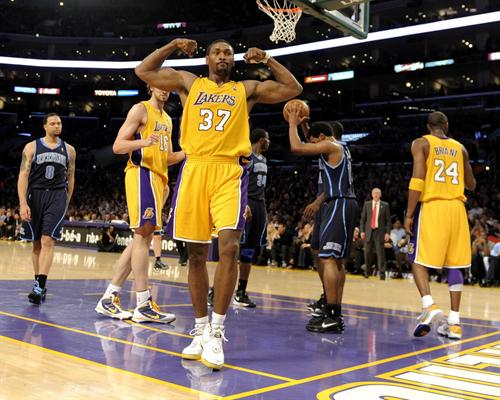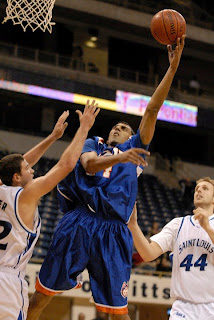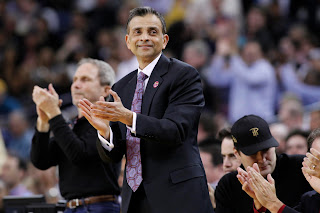11 years ago, the Varanasi District girls basketball team that was headed for the Under-17 School Nationals in Gorakhpur had a little problem. They only had 11 players on the squad, and needed a 12th from somewhere to complete the roster. They placed their faith on an unproven, small wonder, an 11-year-old who made enough of an impression to bolster her hoops career forever.
See, Akanksha comes from a heralded family of Women basketball stars from Varanasi , the ‘Singh Sisters’ – her three older sisters, Priyanka, Divya, and Prashanti had already made a name for themselves on the court. Divya and Prashanti, in particular, had scaled great heights – both had been stars of the Indian Sr. National Women’s team, and both of them had captained the National side at different points.
Growing up in a family of basketball achievers, Akanksha didn’t really have any other choice except to follow their path on to the famed UP College Basketball Court in Varanasi. “Before I started playing, I used to just go bicycling to the court and saw my older sisters playing,” said Akanksha, “The competition and the close games used to excite me a lot. When the next batch of sub-juniors began to play, I joined them, and that’s how I was first introduced to the game.”
But her big break came at the most unexpected of times: Sitting in her Grade VI classroom, the 11-year-old was called out of her class and told that the U17 Varanasi Girl’s team needs a 12th player. Since her older sister Prashanti was in the team, the little Akanksha – at 11, by far the youngest in the team – was taken along.
“That tournament changed my life,” she remembers, “I didn’t get to play too much really, but in a game against Lucknow, the coach surprised me by sending me on the court.”
The tiniest girl on the floor then proceeded to hit a couple of big shots, surprising herself. “I scored just five points,” she said, “But because I was so small everyone loved me for it, and I got excited too! That moment made me really confident that basketball was going to be my game.”
She quickly moved up the ranks, surprising herself with her own improvement and growing confident on court. And then the moment arrived that Akanksha remembers as one of the highlights of her young life. “I still remember the first time I was picked to play for India – it was the Indian U18 side,” said Akanksha, “It was the U18 Asian Basketball Championship (ABC) for Women in China. The first time I held my India jersey made me very sentimental!”
That wasn’t the only time that Akanksha felt her emotions nearly getting the best of her. Because guess what? Being in a family full of basketball stars isn’t always peaches and cream. Expectations for success are high, and patience for failure is far too low. With Divya and Prashanti making a name for themselves in the National and International circuit, there was a lot of pressure on Akanksha to follow in their footsteps, prove to the world that she can be in the same class that we have come to expect from the ‘Singh Sisters’. At 5 foot 6, she is also shorter than her older sisters, and like every shorter basketball player, she had to always go a step extra to prove that she belonged. Akanksha admits that, at first, it was a little too much to take. Luckily for her, she transformed that pressure into motivation, practicing further to live up to the billing.
“After my first Junior Nationals, I began to feel the pressure,” she says. “Divya and Prashanti had begun to make a name for themselves. I used to work extra hard because I felt that if I make any mistakes, it would hamper my chances of making the India team.”
But it was the older sisters who came to the aid of Akanksha, helping her regain her confidence. “They had a lot of encouraging things to say to me as I developed,” Akanksha remembers.
Another thing that helped her confidence was her fast-developing skill with the basketball. A common sight during basketball games is the bored look on the faces of some of the bench players, those who have little influence on the outcome of the game. But Akanksha made the most of her time as benchwarmer waiting for her number to be called.
 “I used to just sit or stand around the bench while the game was going on with a basketball, and I never stopped dribbling,” she said, “I kept dribbling and dribbling until my handle became a lot better. The coaches used to notice this and then, they began to use me in the end of games, when the opposition played full-court defense on us. I was a good ball-handler in the pressure situations – and that’s how, although my older sisters played the forward positions, I became a point guard.”
“I used to just sit or stand around the bench while the game was going on with a basketball, and I never stopped dribbling,” she said, “I kept dribbling and dribbling until my handle became a lot better. The coaches used to notice this and then, they began to use me in the end of games, when the opposition played full-court defense on us. I was a good ball-handler in the pressure situations – and that’s how, although my older sisters played the forward positions, I became a point guard.”The lesson here: even bench-warming can be a learning process!
In 2003, Akanksha Singh made her debut in the Senior Nationals and played for the Uttar Pradesh team when she was just an 11th Grader. “Many of the older girls didn’t take my seriously because I was small, but I always found a way to surprise them!”
In 2004, Akanksha followed her sister’s footsteps into the Delhi team. She had been playing with them a lot as a youngster, and this gave her another chance to play with them and develop a better understanding. As anyone who has ever played regular basketball with a sibling knows, there is a unique experience of understanding and expectations between the two: Siblings tend to understand each other’s movements mentally when the others on court may be a step or two behind, but siblings also judge each other’s mistakes harsher than everyone else on the team.
Akanksha’s experience of playing with her sisters has been no different – whether it has been in pick-up games in Varanasi, National tournament games for Delhi, or international games for India. “I can understand them better, I know their expressions, and get them the ball. I know exactly what they’re going to do.”
And just like her older sister’s mentored her, Akanksha took on the mentor’s role for the youngest, fifth Singh sister, Pratima. “The two of us love to play together,” she said of the 21-year-old, who is now also in the Delhi side, “But I like her to practice playing opposite me so she can get better!”
Easy enough that Akanksha walked away with the award for the tournament’s MVP. But she wasn’t done announcing her coming-out party to the Indian basketball world. When India took part in the Asian Games basketball tournament in Guangzhou (China), Akanksha was just one of the smaller stars in the 12-women roster. It was American coach Tamika Raymond, brought to lead India into this competition, who injected another boost of confidence into the youngster, giving her the starting point guard role for the team.
“I wasn’t expecting to start, but Coach Raymond made me work hard to earn it. She began to play me a lot more during the practice sessions – every time there were mistakes with the offense, I was substituted in. I quickly learned that I was being sent in to fix those mistakes, and so I went ahead and did it.”
And suddenly, there was no doubt of her sublime ball-handling and scoring skills anymore – Akanksha responded well and saw her own game elevate to the highest level. She has been on a tear ever since her return from China, becoming a formidable force for Delhi and running the offense like a perfect point guard is supposed to.
And now, for the first time perhaps, Akanksha Singh may be finally established. She is small, but her skills surprise no one anymore. She is one of the 24-women heading for the Indian All Star game in Mumbai in a couple of weeks, and opponents can no longer afford to overlook her talents.
But the youngster is far from done climbing the ladder. She has bigger dreams, for herself and for her country. “I want to be part of a team that finally wins a medal for India. We may not look formidable right now but I don’t think such a feat is impossible. With the right kind of coaching, I think we can reach that summit.”
Coming from someone who has looked up at every summit and then confidently mastered it, experience has now taught us to know better than doubt the ‘Bacchi’s’ ambitions.






























